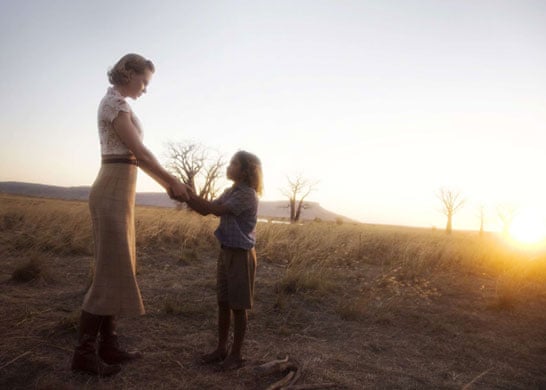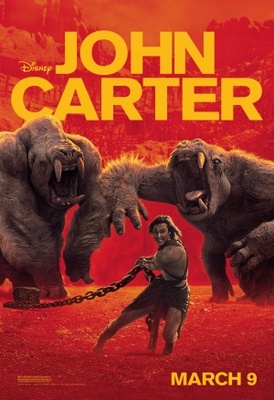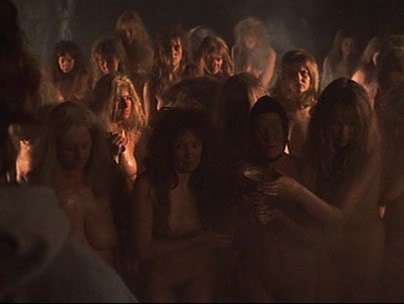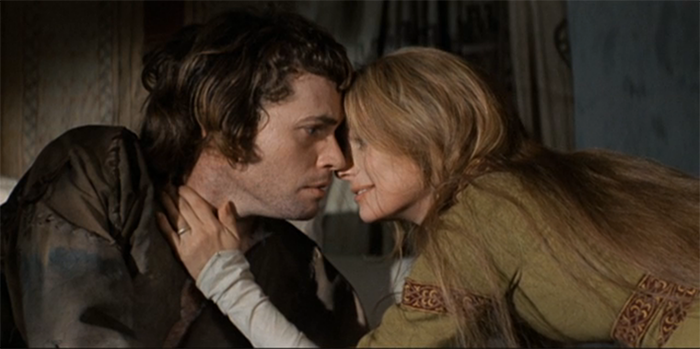It is a reality
of film-making that can be painful to swallow: there are films that sink at the
box-office that have genuine merit—or if they fail, fail in an interesting way—
and films that make an obscene amount of money that aren’t well done or even memorable.
Social appetites, and twists of capricious Fate play a role; but there is a certain amount of condescension from middlebrow critics that plays
into this dynamic as well. As Susan Doll wonderfully puts it in a
MovieMorlocks post dedicated to movie turkeys, “I rarely agree with movie reviewers, and truth be told, I have stopped
reading a lot of reviews, especially from online sources. While
reviewers like to call themselves 'critics,' true film criticism does
not revolve around personal taste.I loathe reviewers who jump on a flawed film that may still be
worthwhile viewing and dub it 'the worst film ever made,' which
sometimes affects the box office for that title.” The curious thing that I’ve found in my
own experience is that the more scholarly a critic becomes, the less myopically
elitist they tend to be. In the spirit of egalitarian enjoyment, I decided to give the spotlight to a handful of films that did not succeed commercially or
critically, but which I still feel have merit.
 |
| This could easily have been a 1940s promotional still |
Australia(2008).
Baz Lurhmann is among the most polarizing of
contemporary directors; people tend to either despise his movies or adore them.
I fall into the latter category; his Red Curtain Trilogy—
Strictly Ballroom(1992),
Romeo
+ Juliet(1996) and
Moulin Rouge(2001)—
are three of my favorite movies. Hence, I went to his WWII romance
Australia with a more open mind than
some viewers might have. The film fell short commercially and many reviews were not complimentary. While it is my least favorite of Lurhmann’s
movies and it is not flawless, I still appreciated its attempt to serve as a
throwback to Golden Age Hollywood-era romantic films centering around a journey
through a perilous landscape, ala John Ford’s
Stagecoach(1939)
or John
Huston’s
The African Queen(1951).
Correspondingly, the characterization is done in broad, grand gestures. The
hero is rugged and known only by his occupation(“The Drover”), the English
aristocrat heroine is principled and prim but digs in and shows her courage;
the villain is murderous and devoid of scruples, particularly in his treatment
of the Aboriginal people. This mode of storytelling was read by the film's naysayers as stiltedly artificial or hokey rather than as a throwback to classic cinema. This mission is, admittedly, undercut by the third act shift
back to the Faraway Downs ranch before the Japanese attack; the story’s structure
would’ve been better served by using the cattle drive as the central narrative
spine. But I still find charm in the film’s deliberately old-fashioned aesthetics,
and in the relationship between Nicole Kidman’s Lady Sarah Ashley and the orphan Nullah(Brandon
Walters), which emerges as the movie’s true love story (no offense to
gloriously handsome Hugh Jackman).
 |
| Nicole Kidman and Brandon Walters |
 |
| Poster art suggesting the film's pulp novel origins |
John Carter(2012) It
is one of the biggest box-office failures of recent years, with a final budget
$20 million more than James Cameron’s
Avatar,
and a net American theatrical gross of $73. This is deeply unfortunate, and more the fault
of a drastically poor marketing campaign than of the film itself, which is an
entertaining sci-fi adventure, one I personally prefer to
Avatar in terms of pop-corn escapism.
The movie, directed by Andrew Stanton, was the fruition of a
decades-long journey to produce a film adaptation of Edgar Rice Burroughs’s
1912 pulp novel
A Princess of Mars.
During my grade school years, I read all of the series featuring Burroughs’s
other famous creation, Tarzan, soaking up their cliff-hanging action, exotic
locals and bosom-heaving romance(they also contain
regressive racial and gender stereotypes that make me cringe
now, but that’s a subject for a different post).
John
Carter succeeds in delivering the hairs-breadth adventure and imaginative
grotesquerie that made pulp fantasy novels so fun. Some found Taylor Kitsch too bland
as the title character, and on my first viewing of the film I was inclined to
agree. But on my second, it occurred to me that perhaps he wasn’t bland so much
as a slate for the outlandish elements of the scenario to write
their influence on. It’s a component of popular fiction that can be traced back to JRR Tolkien and even to Charles Dickens:
the hero is often nondescript, with the eccentric supporting characters and the
environment they move through supplying the interest. More than compensating is
Lynn Collins as the Martian princess Dejah Thoris, spirited and bright and
capable of wielding deadly swords. If you haven’t seen her great turn as Portia
in
Michael Radford’s The Merchant ofVenice (2004), please do. In a fairer universe,
John Carter ought to have been the film that launched her to a
broader fan base. The film does overextend itself in the final fifteen minutes,
attempting to prepare for a sequel that was not to be; nonetheless, I still
stand in the camp of those who feel it deserved better than it got.
 |
| Shakespearean-trained Lynn Collins as a princess of Mars |
Macbeth(1971) The "Scottish Play" was the first Shakespeare play I read, and Roman Polanski's film was the first performance of it that I watched. Of all the adaptations of the play, this is probably the bloodiest(though the 2015 film with Michael Fassbender may well take its place), certainly the grittiest. Filmed on location in Britain and Wales, it drips with rain and sweat as well as blood, a chill often is often blowing, bringing fog or thunder. The film sank at the box office and the majority of critics dismissed it. It was Polanski's first directorial effort following the murder of his wife Sharon Tate by the Manson cult; contemporary critical assessment read the violence in
Macbeth as psychological purging and nothing more. Whatever Polanski's personal motivations, the goriness of his adaptation(co-written with dramaturge Kenneth Tynan) is saved from gratuitousness by its function in demonstrating the cyclical nature of political struggle in this medieval landscape. The play's off-stage murder of the sleeping Duncan is shown, as is the beheading of the traitorous first Thane of Cawdor. Both deaths serve as foreshadowing for the appearance of Banquo's ghost and of Macbeth's own fate at the sword of MacDuff. But the film ends with Donalbain, Malcom's brother, walking to the cavern where the Weird Sisters meet; the darkly ironic implication is that the brutal cycle of ambition and death did not end with Macbeth.
 |
| It's more Goya's "Witches' Sabbath" than centerfold |
The film was also faulted for its financing.
Macbeth was the first Playboy Productions movie; subsequently, the choice to have Lady MacBeth nude during the sleepwalking scene was read as titillating and gratuitous. But the tremulous vulnerability of Francesca Annis's performance of the scene(in marked contrast to her earlier seductive iciness) is more likely to provoke disturbed pity than prurient interest. Similarly, the nakedness of the witches in the cauldron scene(along with their innumerable fellows added by the filmmakers)is more likely to make flesh creep than rise. Though perhaps not the definitive version of the play, the passing of time has granted Polanski's
Macbeth a measure of respect initially denied it(including an excellent Criterion Blu-ray release), and rightfully so.
 |
| Macbeth(Jon Finch) and his Lady(Francesca Annis) |








No comments:
Post a Comment